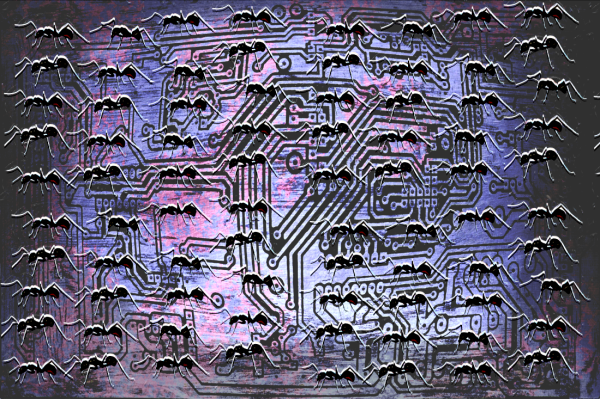BY LETTER
Ant
 Image from Steve Bowers |
During the early Information Age ants were widely studied for clues regarding software, artificial intelligence, emergent behavior, and microbot design and programming. They were less popular as bioagents, although during the Interplanetary period several attempts at partial provolvution were made. Complete provolvution via sentient symbiotic nanite prosthesis was achieved several times during the late Interplanetary and Nanotech ages, and again during the early and late Federation period. However, ant provolves proved difficult in ant-human interactions; even with biochip enhancement the difference in consciousness was too great. Most eventually opted for their own cultures and civilizations in the Utopia Sphere, in Metasoft Version Tree space (they found the vecs easier to relate to than humans), the Zoeific Biopolity, or in the outer regions away from mainstream galactic civilization.
One of the most successful ant-derived variants is the Anttechian hive mind, which emerged in 7465 on the museum ship Great Green Growth.
As with many terrestrial arthropods, baseline and space-adapted non-provolve ants in contrast formed and still form an important role in the ecology of most biohabitats. Thousands of new subspecies and species have emerged through genetic drift in isolated orbitals, or been geneered in the thousands of years since the first simple biospheres were established in low Earth and cislunar orbit during the Information Age. Generically engineered non-sophont ants are included in may ecopoesis packages and artificial soil variants, although these are often replaced with robotic synsects with similar capabilities.
Contrary to popular belief, Vedokiklek are not ant provolves, although they do contain some measure of formicid genome.
Related Articles
Appears in Topics
Development Notes
Text by M. Alan Kazlev
Initially published on 16 September 2001.
Initially published on 16 September 2001.






